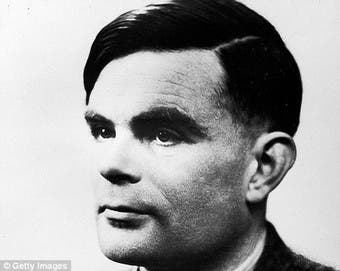Alan Turing is considered by most to be the father of the computer; the British mathematician had one of the most tragic fates ever suffered by scientists. Aside from defining concepts such as ‘algorithm’ and ‘artificial intelligence’, he also put up an idea that repetitive biological patterns are generated by a pair of morphogens that work together as an ‘activator’ and ‘inhibitor’. Now, researchers from the King’s College London have managed to provide the first evidence that this theory is true.
In order to prove this, they studied the development of the regularly spaced ridges found in the roof of the mouth in mice and carried experiments on mice embryos, practically identifying how the team or morphogens worked together and how they could predict where ridges would appear. They were able to pinpoint the specific morphogens responsible for the ridge pattern (Fibroblast Growth Factor) and Shh (Sonic Hedgehog). They proved that if their activity is increased or decreased, the ridge pattern suffers modifications predicted by the Turing equations. For the first time, biologists have been able to prove and observe the direct implications of this 60 year old theory.

Dr Jeremy Green from the Department of Craniofacial Development at King’s Dental Institute explains :
Regularly spaced structures, from vertebrae and hair follicles to the stripes on a tiger or zebrafish, are a fundamental motif in biology. There are several theories about how patterns in nature are formed, but until now there was only circumstantial evidence for Turing’s mechanism. Our study provides the first experimental identification of an activator-inhibitor system at work in the generation of stripes – in this case, in the ridges of the mouth palate.’
‘Although important in feeling and tasting food, ridges in the mouth are not of great medical significance. However, they have proven extremely valuable here in validating an old theory of the activator-inhibitor model first put forward by Alan Turing in the 50s. Not only does this show us how patterns such as stripes are formed, but it provides confidence that these morphogens (chemicals) can be used in future regenerative medicine to regenerate structure and pattern when differentiating stem cells into other tissues.’
Alan Turing, despite being instrumental in breaking the Enigma code in World War II, saving countless lives in the process, was condemned for indecency because he was a homosexual. This, at the time, was illegal in Great Britain, so he was given a hormonal treatment, designed to reduce libido. Practically, he was chemically castrated – the process was so severe he actually started growing breasts. Thus, one of the world’s brightest minds was defeated, and less than two years after this, he committed suicide, swallowing cyanide.
Still, researchers and people throughout the whole world pay homage to him, and this year is actually the Turing centenary – marking 100 years since his birth.
‘As this year marks Turing’s centenary, it is a fitting tribute to this great mathematician and computer scientist that we should now be able to prove that his theory was right all along!’


